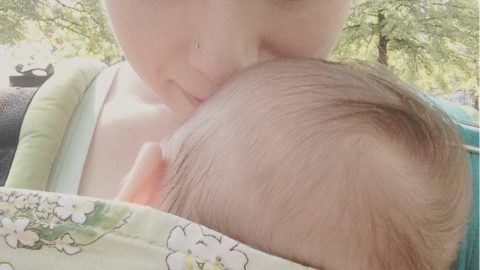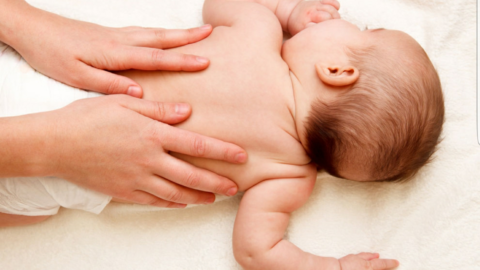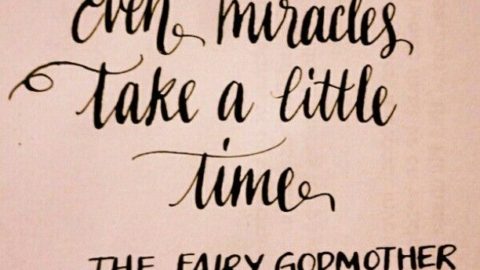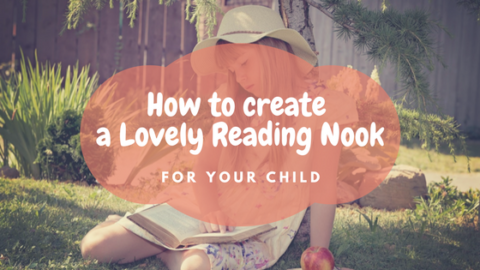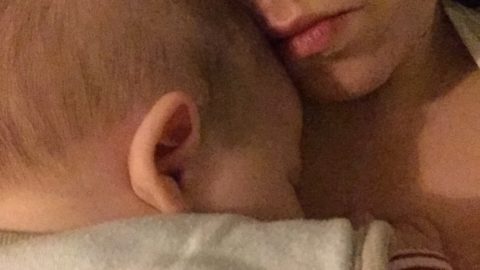Toys: How Many is too Many?
Every good grandparent loves to spoil their children. All too often I find myself reminding my own mother that Tessa has enough toys, or even that she already has a similar toy to that one she is insisting on buying her. I understand her desire. Everyone wants their children and grandchildren to be happy and healthy and have everything their heart could desire. But what if their heart does not desire SO. MANY. TOYS?
If we take a look at the “typical American” family home, we usually will find a space or even a specific room cluttered (despite Mom’s best efforts) with toys and stuffed animals.
 How much of the toy craze in children is brought on by their own family? This was a question I asked myself after discovering minimalism and Montessori. The definition according to google for Montessori is “a system of education for young children that seeks to develop natural interests and activities rather than use formal teaching methods.” This means following the child’s interests, their true interests.
How much of the toy craze in children is brought on by their own family? This was a question I asked myself after discovering minimalism and Montessori. The definition according to google for Montessori is “a system of education for young children that seeks to develop natural interests and activities rather than use formal teaching methods.” This means following the child’s interests, their true interests.
How often do you find a baby playing with a set of keys, a silicone spoon, or even a wrapper?
Often after my mom spends decent money on fancy toys, she is displeased with Tessa choosing something as simple as the buckle on my backpack to play with over her cool new battery-operated toy (which, might I add, I don’t permit anymore). If you watch children’s interests, their natural interests, you will find that it’s the simple and often open-ended toys, objects, and as Maria Montessori calls it “work” to play with. This is not only true for babies and toddlers, but older children too! Adults have had years on the earth to figure out what things are and how to manipulate them. Children tend to gravitate towards the most basic things because they have an innate desire to learn how they work.
Here are my top 5 benefits to limiting toys:
-
Creativity and Resourcefulness
Limiting toys can help a child build their sense of creativity and teach children to become resourceful! It helps them learn how to breakthrough “boredom” and create their own fun. Having a limited number of toys from the beginning of life (or even now! It is never too late to minimize.) teaches that child how be resourceful and to find different ways to use, apply, and play with minimal toys. This leads to my next point.
-
Better Focus
How often do you find a child who appears to have PLENTY of toys to play with say they are bored? It is the same concept as adults who have an entire closet of clothes and yet they “can’t find anything to wear”. When provided with too many options, children tend to lose interest in a toy faster and overlook all the potential options they truly have. However, from personal experience, children who are provided with less toys play for longer periods of time and have a variety of different ways of playing with those sets of toys and activities. This is where their creativity, as mentioned above, meets their natural need to focus and master certain skills and tasks.
-
Cleanliness
Everyone loves a clean house, especially parents! Although I encourage allowing “creative messes”, overall, providing your child with minimal toys keeps things more manageable! With less toys, children (and parents!) feel less overwhelmed and can better keep things tidy. I encourage having shelves specifically for work/toys rather than toy boxes or baskets. This means each toy/work has its own spot and children, even at a very young age, can be shown and taught how and where to put things away. With the child being less likely to lose interest in their toys quickly, they can play with purpose and decide when to move on. With a parent or guardians guidance, they can also learn how to place items they are done with away on their shelf.
TIP: Take a photo of the work/toy/activity, laminate it, then tape it to the corresponding spot on the shelf you would like the child to return the work to.
-
Not having to buy new toys all the time
By providing a limited number of toys to your child at a time, you can keep additional activities and toys stored away and rotate what is available to your kids. This is an awesome trick for when kids do struggle with staying entertained with the same small number of toys. Keep the ones that the child maintains interest in available, put away the ones that they have lost interest in, and add ones that have been stored away for a “new” activity. The awesome side of this is you can keep the activity that the child has grown bored with stored for several weeks or months and then add it back to the shelves. All the sudden its brand new to the kids and you’ll be amazed at how interested they are in it again and often even find new ways to play with the same exact toy/work.

-
Appreciation
I think a huge part of why I love having minimal toys for my own daughter is the ability to teach her that it is okay and normal to desire new things. How often do you as an adult pass a store and desire something new (aka any time I walk into Target)? For me, it happens almost every time I’m in public. I see cars I would love to have, animals I would love to own, and shoes I would love to wear. The same is for children! When they go past new toys, naturally they will desire some of those toys! You know you are not depriving your child of things to play with by not buying them a new toy every week just as you are not depriving yourself for not buying a new pair of shoes every week. However, when you do get your child a new toy, they often will love and appreciate that toy way more than they would if it were an often occurrence just as you would likely adore a pair of shoes you bought after wanting them for weeks and possibly saving up to buy them.
Quick Tips
- By buying less toys, you can focus your budget on quality toys and especially ones that are open ended and can last over different developmental stages and ages.
- Focus on your child’s interests! Find what they are into at the moment or stage in their life and focus on providing them work allowing them to explore that interest. (example: Tessa at 17 months and was obsessed with buckles and lids so I made sure to provide her a variety of lids and “open/close” work to play with. I usually give her 1 or 2 at a time to allow her to focus on mastering that specific one before I switch it out with a new one. You would be amazed how long she sat there and did the same thing repetitively, but that is EXACTLY what she needed in that stage.)
- Don’t limit your own creativity! Just because you may have a decent budget for toys now doesn’t mean you must spend a ton! I often find the best toys for Tessa in the kitchen aisle at the store or even ones we already have. (example: her favorite right now is an empty tomato juice bottle with large round cap that was easy for her to master twisting on and off).

Be sure to join us in our social media accounts and be up to date with the progress of our project!
And… Don’t forget to share your brelfies using our hashtag
#BreastfeedingWorld
Lauren P Lewis is a passionate, young, single, college mom. Having her daughter at the age of 19, she quickly fell in love with researching the topics of child development, breastfeeding, natural birth, baby wearing, cloth diapering, and gentle parenting styles to become the best mom she could be. She is currently in college studying Child Development. She hopes to combine her passion for growing sustainable food, raising farm animals, and in general being outdoors with her passion for children.



